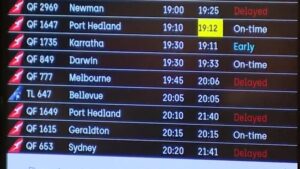
UPDATE: New South Wales (NSW) Premier Chris Minns has just announced groundbreaking youth crime reforms aimed at tackling rising youth offending. The Minns Labor Government will introduce new legislation today, November 18, 2025, that strengthens the doli incapax test, providing police and courts with enhanced tools to intervene earlier and ensure community safety.
These reforms come in direct response to community concerns over youth crime, particularly in rural areas. Recent data indicates a significant 12.3% decline in young people prosecuted in regional NSW over the past two years, a positive sign amidst ongoing struggles against youth offending.
The new laws will amend the Children (Criminal Proceedings) Act 1987, formally codifying the doli incapax test—the legal presumption that children aged 10 to 13 lack the capacity for criminal responsibility. This shift aims to close gaps where young offenders currently face little to no consequences for their actions.
Authorities confirm that the amendments will require prosecutors to prove that a child understood their actions were seriously wrong to rebut the doli incapax presumption. Conviction rates for this age group have plummeted from 76% in 2015-16 to just 16% in 2022-23 under previous leadership, highlighting the urgent need for these reforms.
Minister for Police and Counter-terrorism Yasmin Catley emphasized the importance of the reforms, stating that police are actively engaged in community safety efforts and require these legislative changes to better guide their interventions. “We all want our community to be safe and better outcomes for young people,” she asserted.
The reforms will also expand the Young Offenders Act 1997, allowing greater access to diversionary measures that can steer children away from a life of crime. Under the revised law, young offenders will be eligible for diversion options even without formally admitting guilt, thereby creating pathways for rehabilitation rather than punishment.
These measures are part of a broader strategy that includes a substantial investment of $23 million to enhance community safety initiatives in areas like Moree, Tamworth, and Kempsey. The government is also exploring a voluntary diversionary pathway for at-risk children and mandatory treatment options for high-risk youth.
Minister for Youth Justice Jihad Dib remarked on the necessity of tailored community-led interventions, stating, “We will work with communities, the police, courts, and service providers to help young offenders change their behavior and keep communities safe.”
The anticipated legislation reflects a commitment to addressing youth offending from multiple angles, ensuring that young people receive the support they need to avoid future crime. As Attorney General Michael Daley noted, “These important, considered reforms will ensure doli incapax operates in the best interests of children and the broader community.”
As the NSW Parliament prepares to debate these urgent reforms, the focus remains on fostering safer communities while providing necessary support for vulnerable youth. This is a developing story that could reshape the landscape of youth justice in New South Wales—stay tuned for updates.






